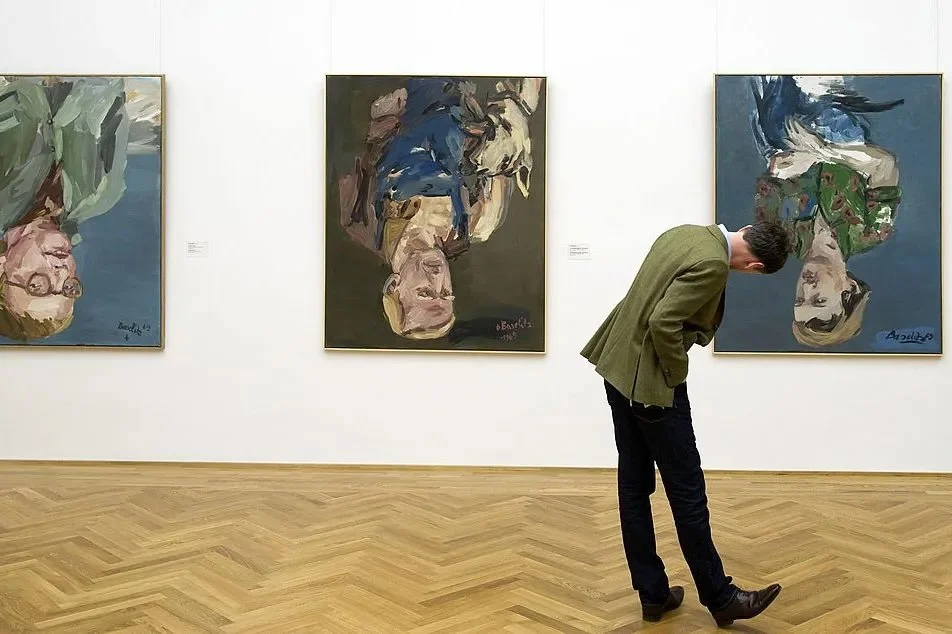Change Your View, Change Your World.
Why do I turn the mirrors? It’s a question I’m often asked, usually accompanied by a curious head tilt. The short answer? To help us see the subject in a fresh way. Our brains, eager to conserve energy, quickly categorize familiar scenes, even breathtaking sunsets or shimmering sky reflections as “been there, done that.” Turning the image sideways disrupts this autopilot mode, inviting us to linger longer and truly see it from a new perspective.
At first glance, the rotated image appears as a single abstract shape. Then, like a Rorschach inkblot, hidden images start to emerge that reflect our own perceptions and thought patterns. The symmetry adds another layer, evoking the meditative harmony of mandalas. This interplay encourages balance, self-discovery, and a reminder to find your centre within when life gets stormy.
Turns out, I’m not the only one drawn to flipping perspectives.
German painter Georg Baselitz famously began turning his paintings upside down in the late 1960s, challenging viewers to look beyond literal interpretation. Critics debated whether his radical gesture was gimmicky or genius, but the effect was undeniable. Baselitz explained that by inverting his images, he forced viewers to focus on the mechanics of his work: the brushstrokes, the colors, the rhythms. Instead of asking what he painted, they had to pay attention to how he painted. The deeper, abstract level of art. Now 87, Baselitz continues to create powerful work, and is still surprising critics.
As British art critic Waldemar Januszczak wrote after seeing Baselitz’s latest show:
“I tiptoed into his huge new London show expecting, once again, to be puzzled by the upside-down gimmick and irritated by the expressionistic German flim-flamming. It didn’t happen. Instead, so fascinating did the art turn out to be, so complex the moods, so glorious the paintwork, that I didn’t want to leave. Indeed, having gone a few hundred yards up the road, I turned round and returned for another look. What a gripping event.’
Similarly, Dr. Betty Edwards, author of the groundbreaking book Drawing on the Right Side of the Brain, encouraged students to draw upside down to activate the brain’s visual and perceptual functions. This technique bypasses the left hemisphere's logical, verbal dominance, allowing the intuitive right hemisphere to take charge. When things get too illogical our left brain wants out. So flipping the image tricks the brain into engaging in new ways. Based on Nobel Prize-winning research by Dr. Roger W. Sperry, Edwards showed how "L-mode" (logical thinking) and "R-mode" (visual perception) work together and how quieting "L-mode" lets us create deeper, more perceptual connections to what we see, beyond our usual, literal interpretations. Students were now free to draw what they saw, bypassing their inner critic about how it should be drawn.
Both Baselitz and Edwards illustrate the power of shifting perspectives, literally and conceptually. By turning the world upside down, they invite us to engage differently, think creatively, and see beyond the surface. Whether it’s art, nature or problem-solving about everyday life, sometimes all it takes is a shift in view to unlock new possibilities.
Scroll to the bottom of my home page to subscribe









